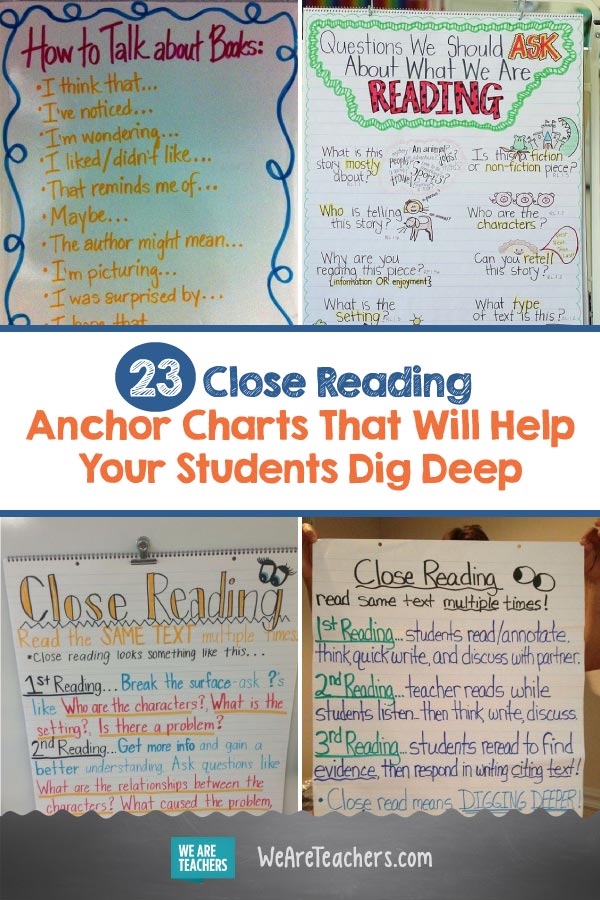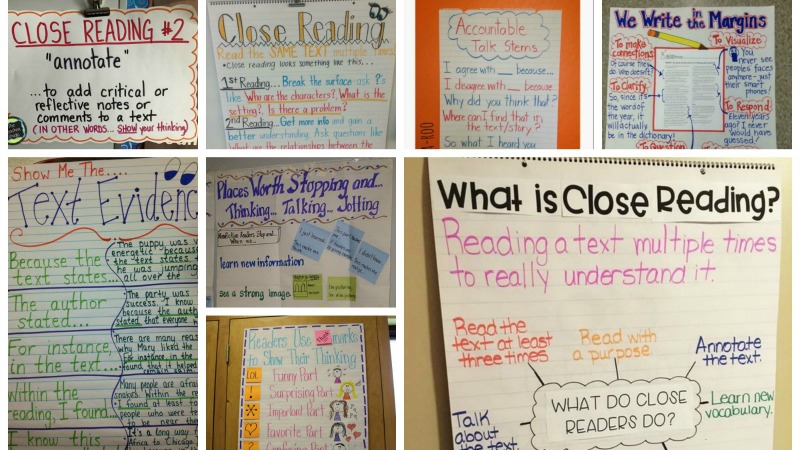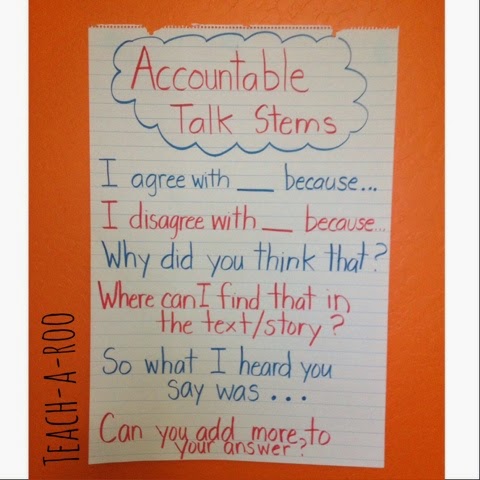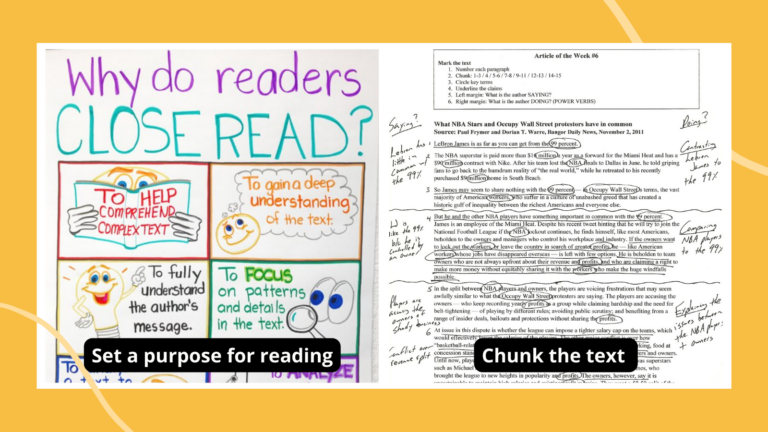Close reading means reading a text multiple times and using strategies to understand the text’s deeper meaning. To help you teach close reading, here is a round up of some of our favorite close reading anchor charts.
Start with a definition.
Introduce the steps of close reading to your students with this anchor chart.
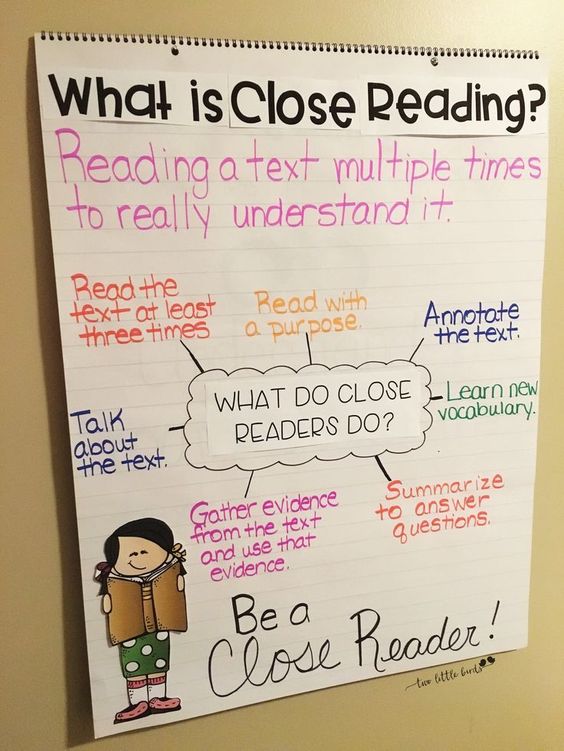
SOURCE: Two Little Birds
This chart lays out the process nicely.
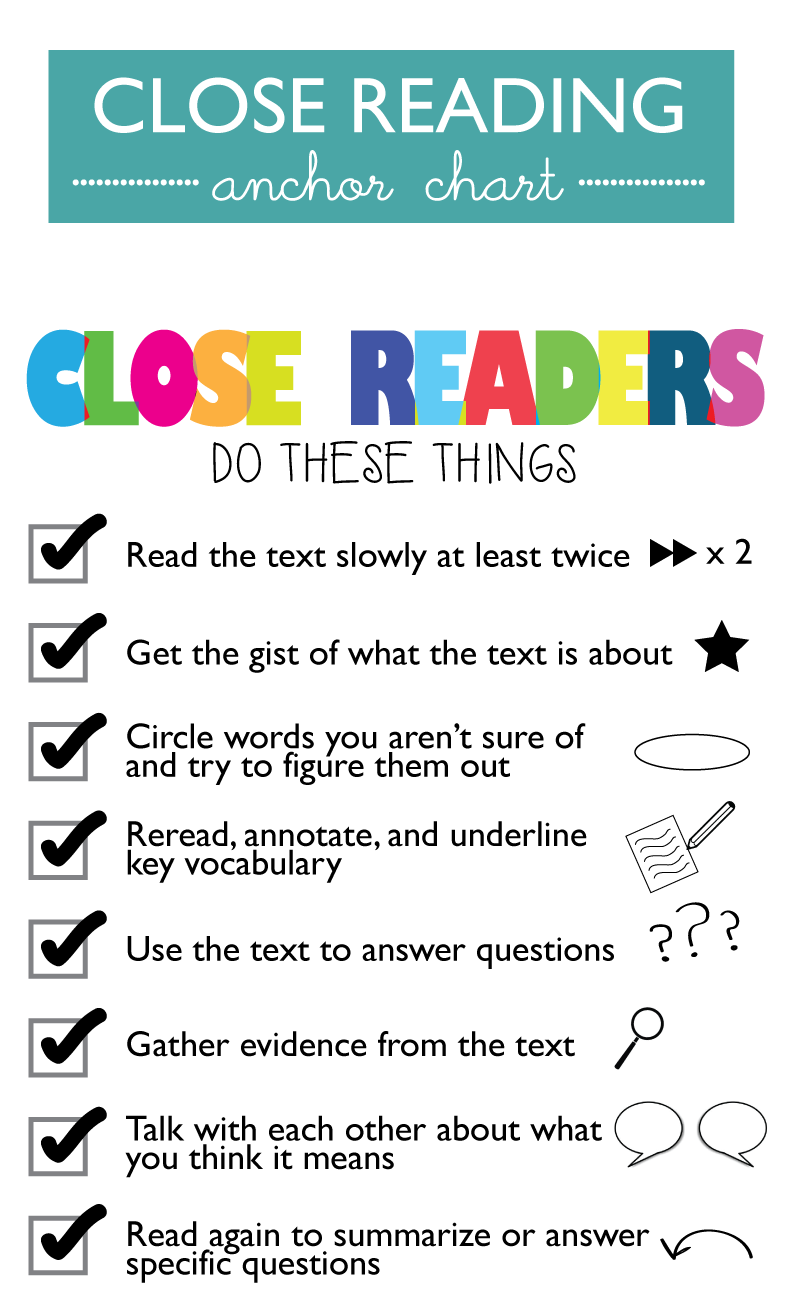
SOURCE: Ms. Houser
Close reading is reading a text multiple times.
These anchor charts explain how and why students read the text multiple times.
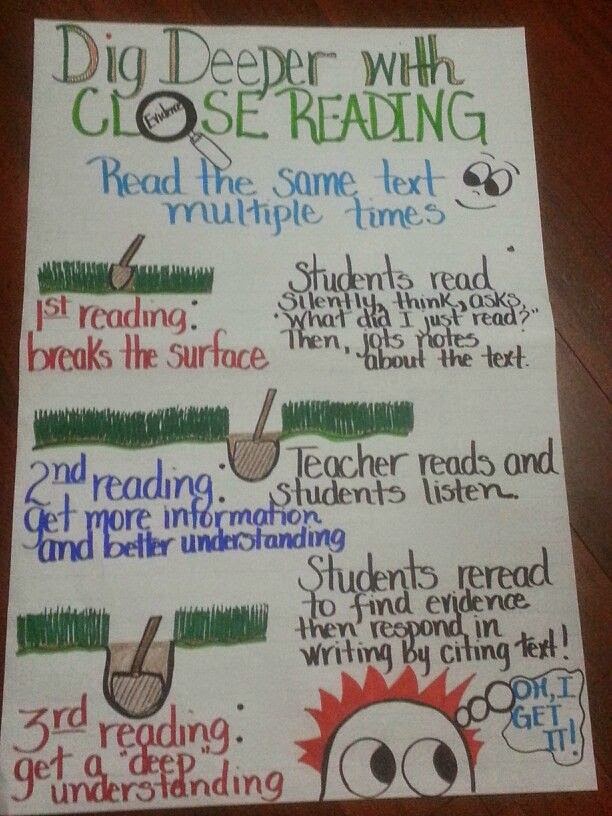
SOURCE: Elementary Nest
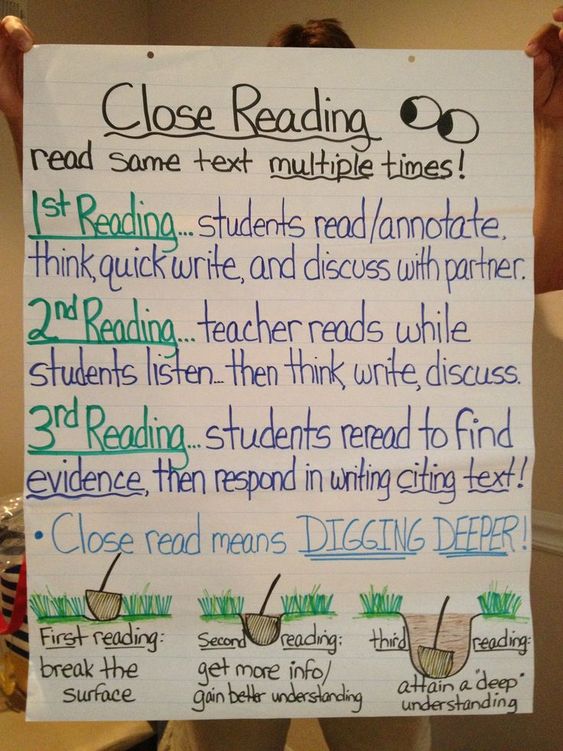
SOURCE: Tara’s Fourth Grade Frolics
This chart gives students questions to think about as they read.
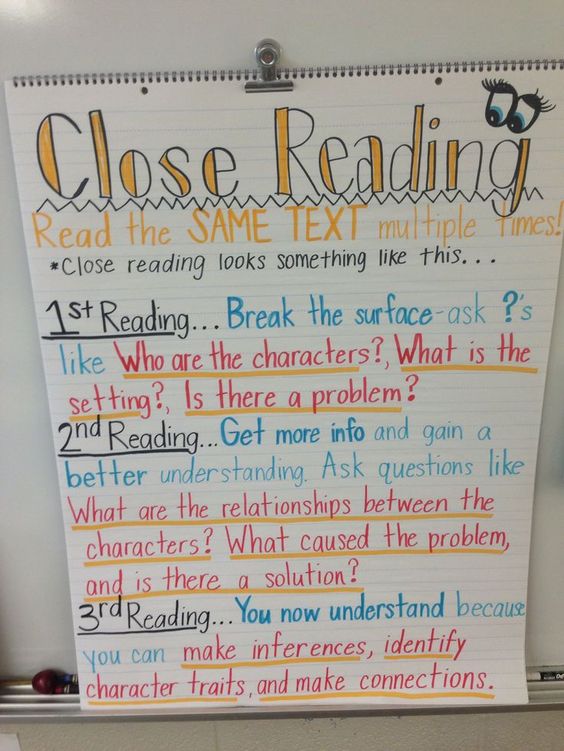
SOURCE: Wise Guys
[contextly_auto_sidebar]
Read with purpose.
Questions reader should be asking themselves as they read.
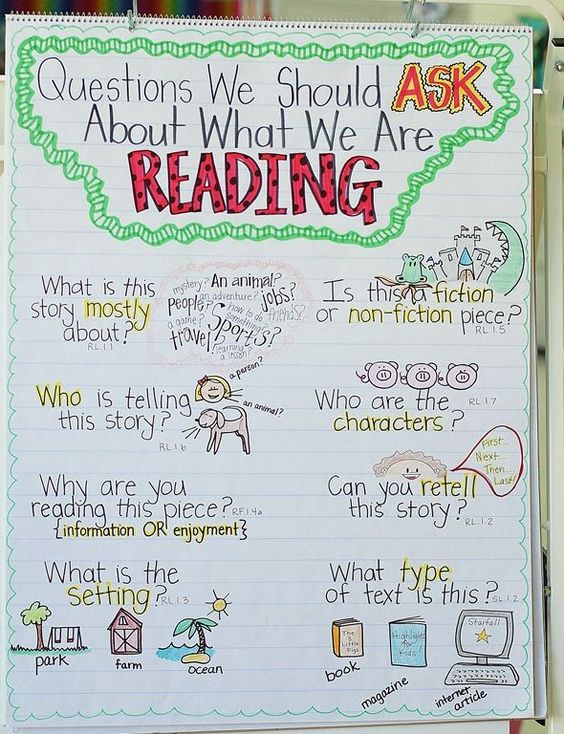
SOURCE: Fern Smith’s Classroom Ideas
Take notes as you read.
Annotate, or in other words take notes, to show your thinking. There are many methods for annotating—from using basic marks and highlighting to writing in the margins and using sticky notes. Write down any vocabulary words that are new to you.
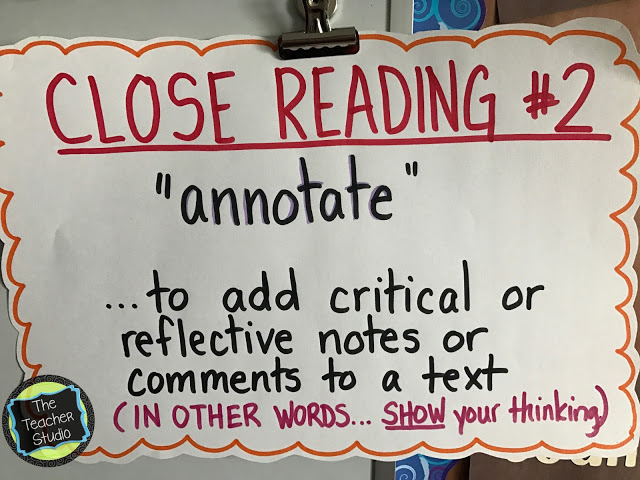
SOURCE: The Teacher Studio
Use simple annotation marks.
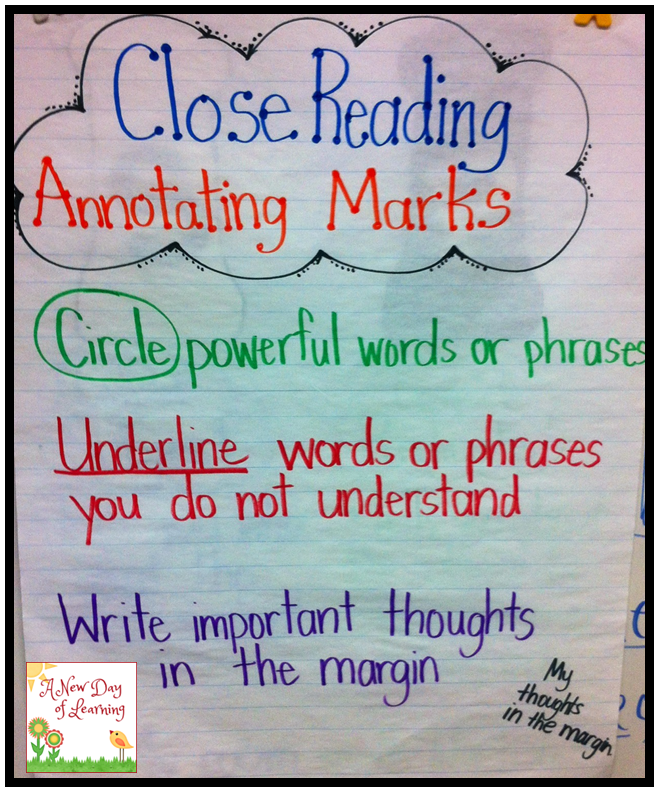
SOURCE: A New Day of Learning
Use sticky notes.
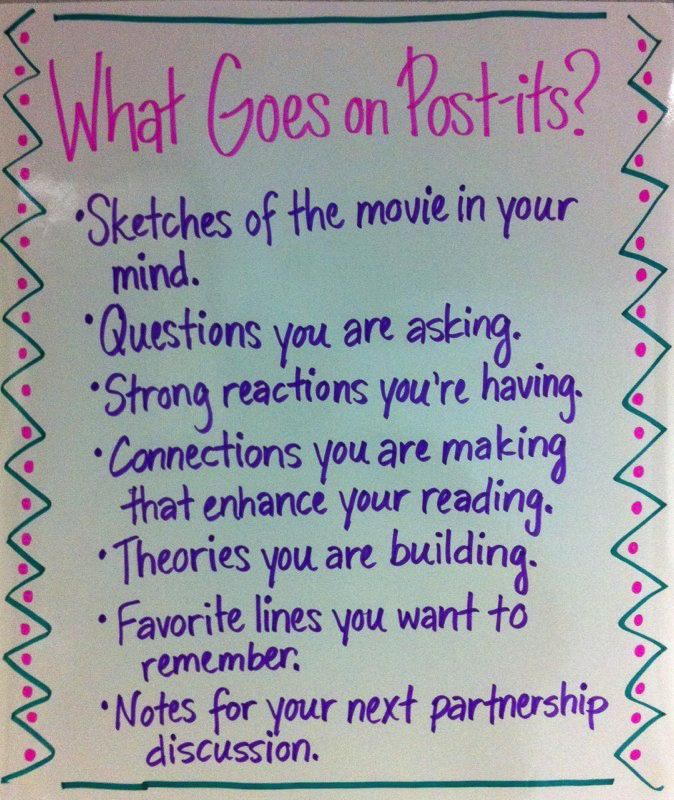
SOURCE: Mrs. Quimby Reads
Think marks are one strategy for taking notes.
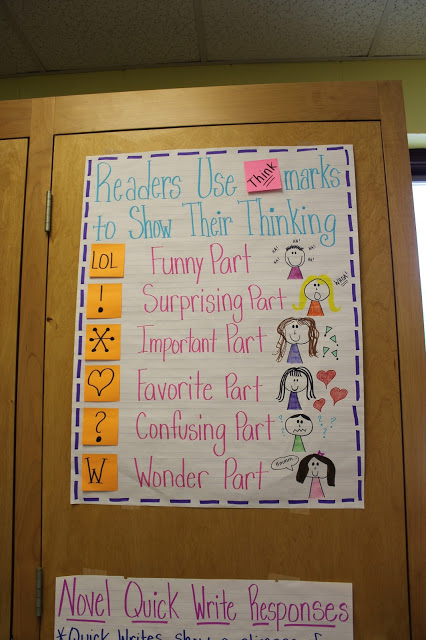
SOURCE: Life in Fifth Grade
Annotating symbols that students can write on copies of the text or on sticky notes.
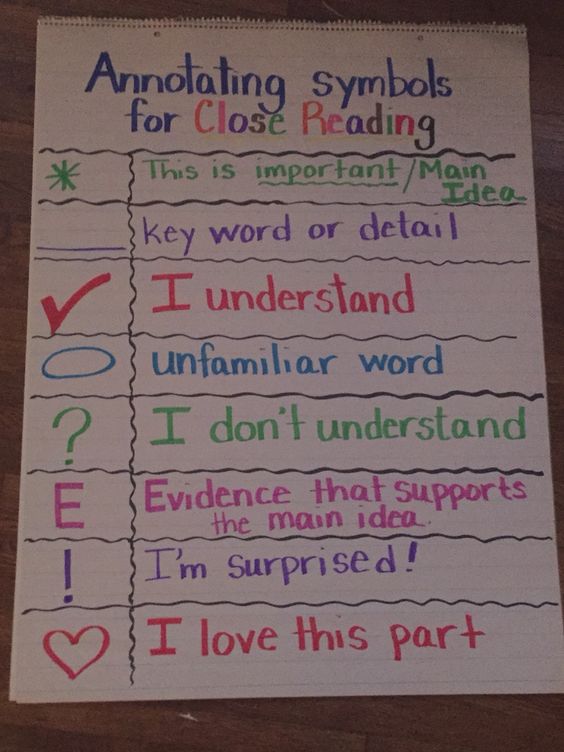
SOURCE: Pinterest
Another version.
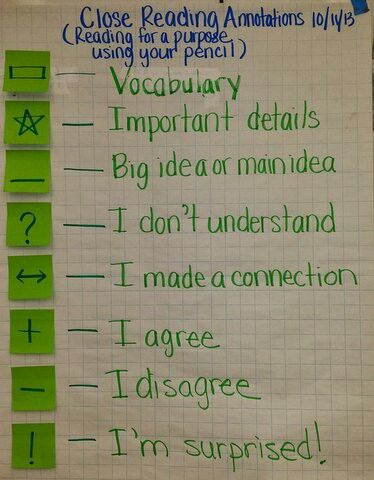
SOURCE: Pinterest
And yet another.
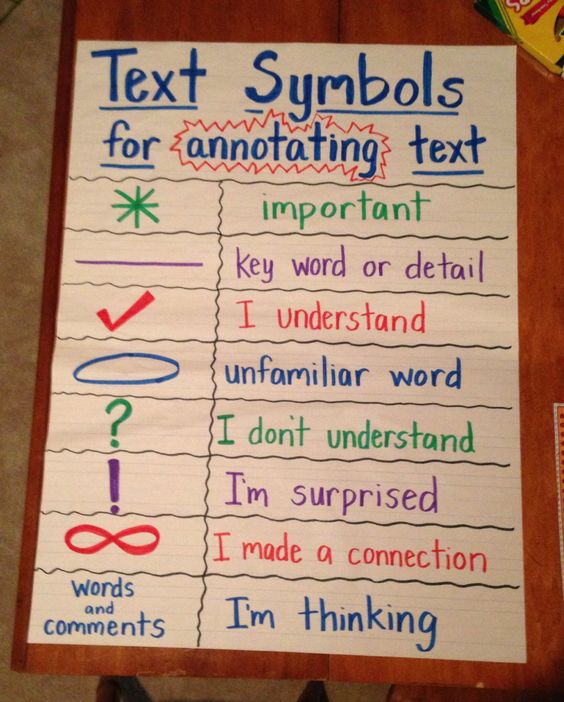
SOURCE: Pinterest
This chart shows why it is important to take notes.
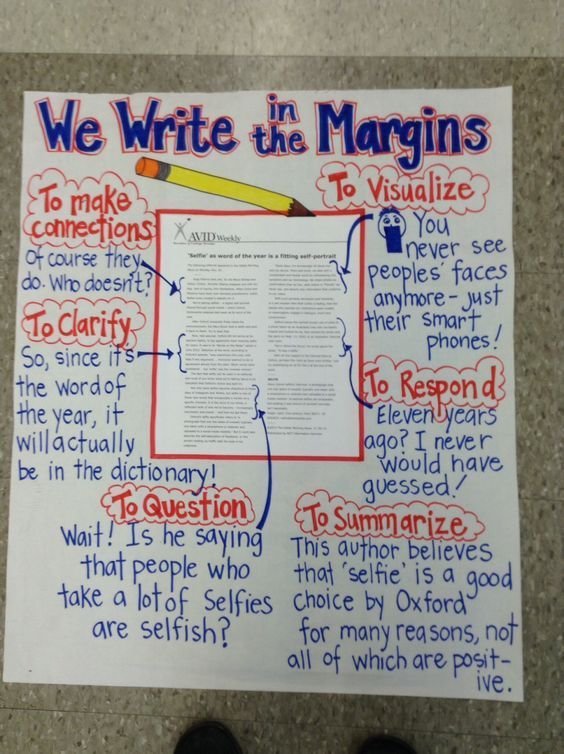
SOURCE: Pinterest
This anchor chart points when it is important to stop and take notes.
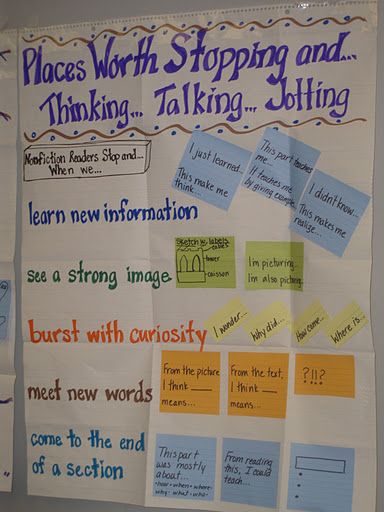
SOURCE: Pinterest
Summarize to answer questions.
When students read a longer text, it’s helpful to break it into sections, writing a summary sentence for each section.
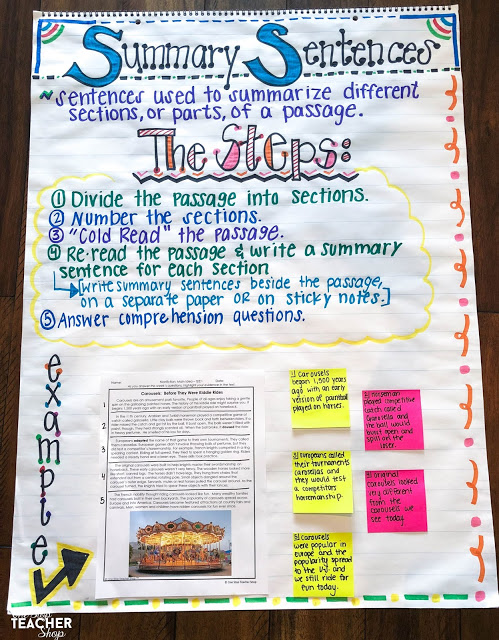
SOURCE: Upper Elementary Snapshots
This anchor chart shows how to pick out basic ideas in a text.

SOURCE: ELA in the Middle
Search for evidence.
As students take notes, they are gathering evidence from the text to answer questions.
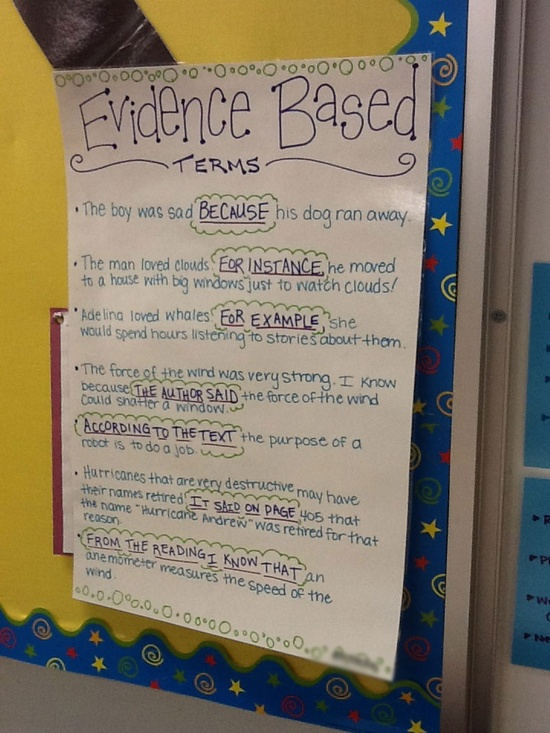
SOURCE: ELA in the Middle
This anchor chart gives students sentence starters to find evidence in a text.
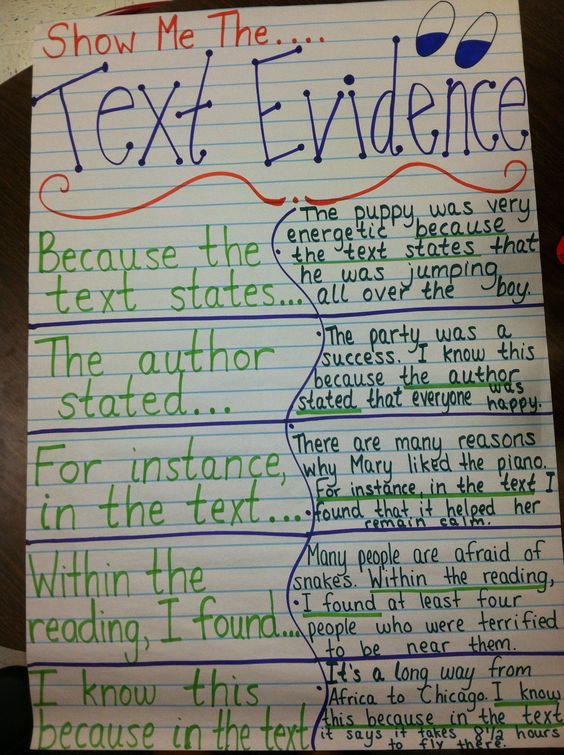
SOURCE: Usazconvention
This chart shows key words to use when stating evidence.
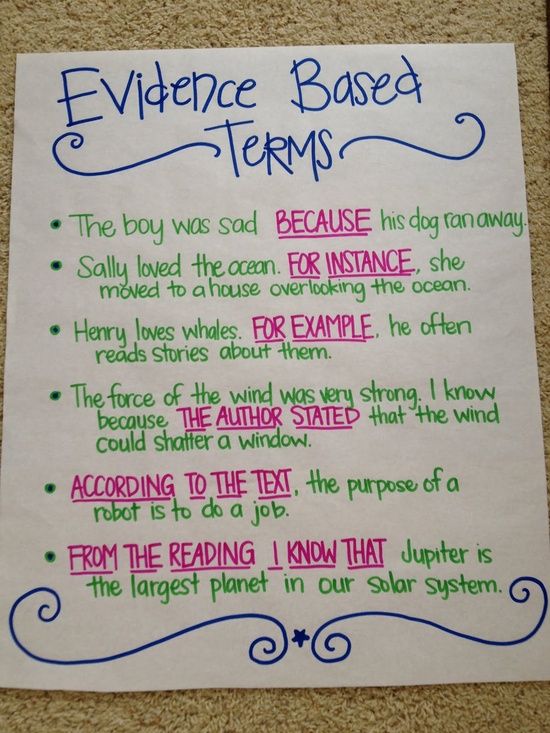
SOURCE: How To Do It
Talk about what you’ve read.
An important part of the close reading process is talking about what you’ve read. This anchor chart gives students language to talk with a partner.
SOURCE: Teach-a-Roo
This anchor chart gives students language to share their point of view.
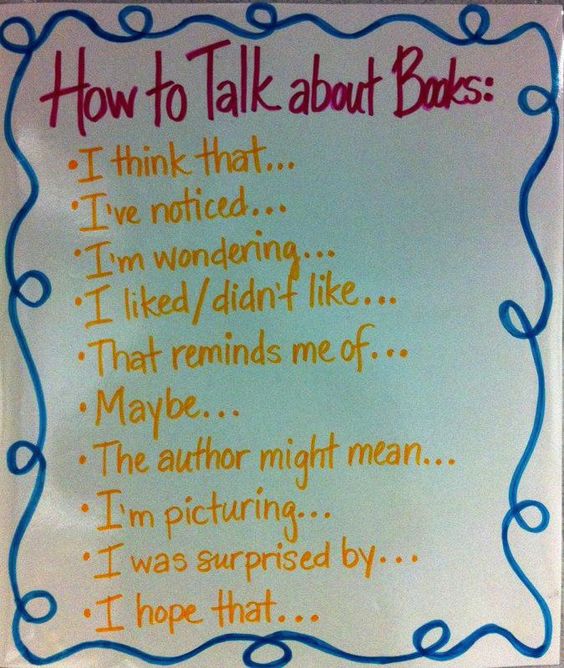
SOURCE: Julie Ballew
More conversation starters.

SOURCE: Life in 4B
What are your go-to close reading anchor charts? Come share in our WeAreTeachers HELPLINE group on Facebook.
Also, check out our favorite nonfiction and reading comprehension anchor charts.
